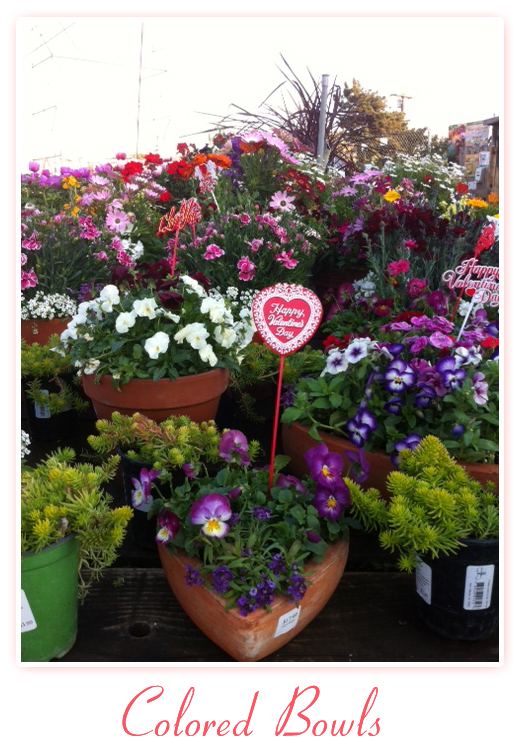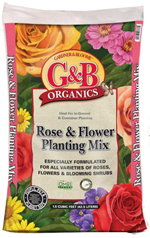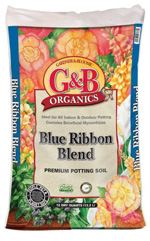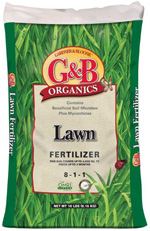|
|
 |
FEATURED QUOTE : "An addiction to gardening is not all bad when you consider all the other choices in life."
|

|

|

|

|
 |
|
It's that time of year again when all of us who are in a relationship become fixated on palpably parading our affections; Valentine's Day should be a celebration of our love, and whether we’re celebrating our sweethearts, our spouses, our parents, or our friends, the gift of a floral plant is not only long-lasting, it also demonstrates a little creativity on our part. Red hearts of chocolates and bouquets of red roses are a lovely gesture, but what about this year taking a different direction? A favorite for generations, the hydrangea evokes charm and grace with its large flower clusters and wide-ranging hues, from white to lime green to deep blue. In the Victorians' language of flowers it means "Thank you for understanding," but don't limit its gifting grandeur. A potted hydrangea in a container that you have chosen, especially tailored to the environment in which it will delight, will be a gift not soon forgotten. One of the most graceful plants this gardener knows of is the calla lily. In the language of flowers it means beauty. Unique and lovely, the calla thrives on 70 degrees Fahrenheit, the temperature at which most households are kept. Add a sunny location, evenly moist soil, and a water soluble fertilizer and your grateful recipient will have a notable new addition to their home. The chromatic comeliness of the primrose truly makes it a statement, again in the language of flowers, of happiness and satisfaction. As it also means "I can't live without you," the surreal multi-colored shades of lipstick pink, deep blue, gold, yellow and purple might prove the most elegant and effective way to let your special someone know just how much they mean to you. The Florist's cineraria, or Pericallis cruentus, sports brightly colored, daisy-like flowers with medium green, arrow-shaped leaves. While the flowers may be white, pink, or red, this popular gift plant from the Canary Islands is most spectacular in the blues and fuchsias. However, if Valentine's Day just wouldn't seem right to you without the gift of roses, why not give a miniature tabletop version? A symbol of love, passion and perfection, the rose has earned its place on this holiday as it has been an emblem of love since ancient times. Whatever you want to say, and however you choose to express it, we hope that you'll consider our suggestions for Valentine's Day alternatives that will truly make this year a memorable one for all of your loved ones. |
 |
|
Blueberries are one of the healthiest fruits around; they are low calorie, almost fat free, packed with vitamin C, antioxidants and dietary fiber--and they taste wonderful. As if that weren't enough, they can add striking beauty to your garden. Whatever your reason for growing them, blueberries will work very well in your landscape plans. In addition to the fruit they produce, they have beautiful bell-shaped blooms in spring, handsome glossy foliage in the growing season, striking fall color and bright red stems in winter. Blueberries are easy to grow, require little care and are seldom bothered by pests. They can vary in size from low ground-covering varieties to large bushes ranging 4-6 ft. high. Their versatility allows them to be used as background shrubs or as border plants. They even make excellent hedges, if spaced correctly. If you are limited in space or just have a patio, consider planting them in containers. Different varieties of blueberries produce different sizes of fruit, with flavor ranging from tart to very sweet. Larger fruiting varieties produce fruit perfect for fresh eating and large desserts, while smaller fruiting varieties are better for adding to cereals, muffins and pancakes. Be sure to select different varieties to lengthen your harvest season from June until the end of August. For blueberry lovers, we suggest at least two plants per family member. Blueberries can tolerate full sun in milder summer climates but prefer partial shade in the afternoon. They prefer a light, airy acid soil, so adding 50% peat moss to each hole is highly recommended. Blueberries like to stay moist but not wet. If your soil does not drain well, consider building a raised bed to plant them in. Feed with an acid plant food in spring and midsummer for best results. Blueberries can be planted as close as 2-1/2' apart if a solid hedge is desired or up to 6' apart if you want to grow them as individual specimens. Just make sure you have access to them so you can get at those tasty, juicy berries! We love blueberries and invite you to add them to your garden. We have a nice selection of varieties that grow well in our local area. Stop by soon and one of our garden experts will help you select the perfect variety for your family! |
 |
|
 |
|
What’s the difference between leafy veggies, flower veggies, root veggies, and fruit veggies? Answer: Leafy vegetables include "leaf-type" vegetables such as cabbage, chard, kale, lettuce and spinach, whose leaves are edible. "Flower-type" vegetables are ones such as broccoli, Brussels sprouts, and cauliflower, whose "flower" is eaten instead of leaves. "Root-type" vegetables are those such as beets, carrots, radishes and turnips, whose roots are the edible part of the plant. "Fruit vegetables" are botanically fruits but treated as vegetables in a culinary sense. These include tomatoes, peppers, and squashes. |

 click here for a printer friendly version of this page
click here for a printer friendly version of this page |
Written content © 2004-2014 Garden Partners LLC, or respective authors. All Rights Reserved. Privacy Policy. All written content contained in this site is protected by United States copyright law and may not be reproduced, distributed, transmitted, displayed, published, or broadcast without prior written permission of Garden Partners, LLC. You may not alter or remove any trademark, copyright or other notice from copies of the content. Would you like a newsletter like this for your nursery or garden center? Please feel free to look at what we have to offer and contact us for your garden center marketing solutions. |









